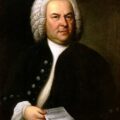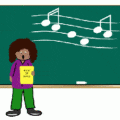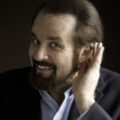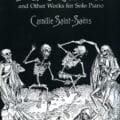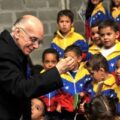Mar 15, 2011
The Good News
In 1960, when I left St. Peter’s Choir School in Philadelphia and entered the local public school. . .Abraham Lincoln High School, populated by some 5,000 students grades eight through twelve – it was a shock on many levels. After being with just thirty-nine other boys for several years the presence of girls, for sure, was among the interesting differences. The sheer number of students was also a source of terror at times. I’d never been in a building with so many other people!
But, the biggest surprise of all occurred one day during lunch. I ventured out of the cafeteria down the corridor toward the music wing of the complex. The school had a separate two-story structure for music classrooms, practice rooms and large rehearsal spaces. The choirs, bands and orchestras – yes, there were plural numbers of all of those in many schools during the heyday of Philadelphia public school music education – could make all the “noise” their hearts desired without disturbing any academic classrooms.
What caught my attention, emanating from one of the classrooms, was the Finale of Dvorak’s Symphony No. 9 From the New World. It was not the music that was so intriguing, but the fact that “not a peep” of student noise could be detected. I was already well aware of the kind of negativity about classical music rampant among my peers in my hometown neighborhood. Yet these eighth grade students were obviously sitting in total silence! Had someone bound and gagged them? Why were they not destroying the classroom or at least hurling paper airplanes at each other and talking?
I sat down on the floor outside the door. Then appeared Dr. Saul Feinberg, who commented: “Might you be more comfortable sitting in a chair?” I took a seat in the back of the classroom as this powerful music that had so moved me before I had even entered Kindergarten poured out of the large wall-mounted speakers. “This music teacher” I thought to myself “must be some kind of magician!”
Because I was a member of one of the choirs, I was exempt from taking Dr. Feinberg’s “Perceptive Listening” course as he called it – as opposed to “Music Appreciation.” During the 1960’s, the school curriculum of the Commonwealth of Pennsylvania still required that everyone in grades eight and nine have two weekly periods of “General Music.” (This requirement has long since been excised.) What “General Music” may have consisted of in many schools I do not know, but Saul Feinberg had taken this bull by the horns and turned it into something very special indeed. Over the many lunch periods I spent auditing Saul’s classes, I observed and absorbed a great deal, and later became one of Saul’s piano students. It is certainly safe to say that I learned everything I know about teaching music listening from him.
Saul carefully documented his work with anonymous surveys of student opinion. Over the course of two semesters he would take a group of typical Lincoln High School students with about 95% of them having negative attitudes toward classical music and facilitate a 180-degree positive attitudinal turn around in 70% or more of the class – year after year. It was nothing short of miraculous!
Saul Feinberg’s insightful problem-solving methodology informs The Discovery Orchestra’s approach to teaching the music listening skills that help people emotionally connect with classical music. Saul demonstrated to us what can be done to encourage this kind of intense personal relationship with music though perceptive listening. It is our passionate mission that through our weekly Discovery Chats on YouTube, American Public Television broadcasts of Discover Beethoven’s 5th© and future productions, The Discovery Orchestra may emulate Saul’s success and, as he did over his long career, make a real difference in the lives of many individuals.


